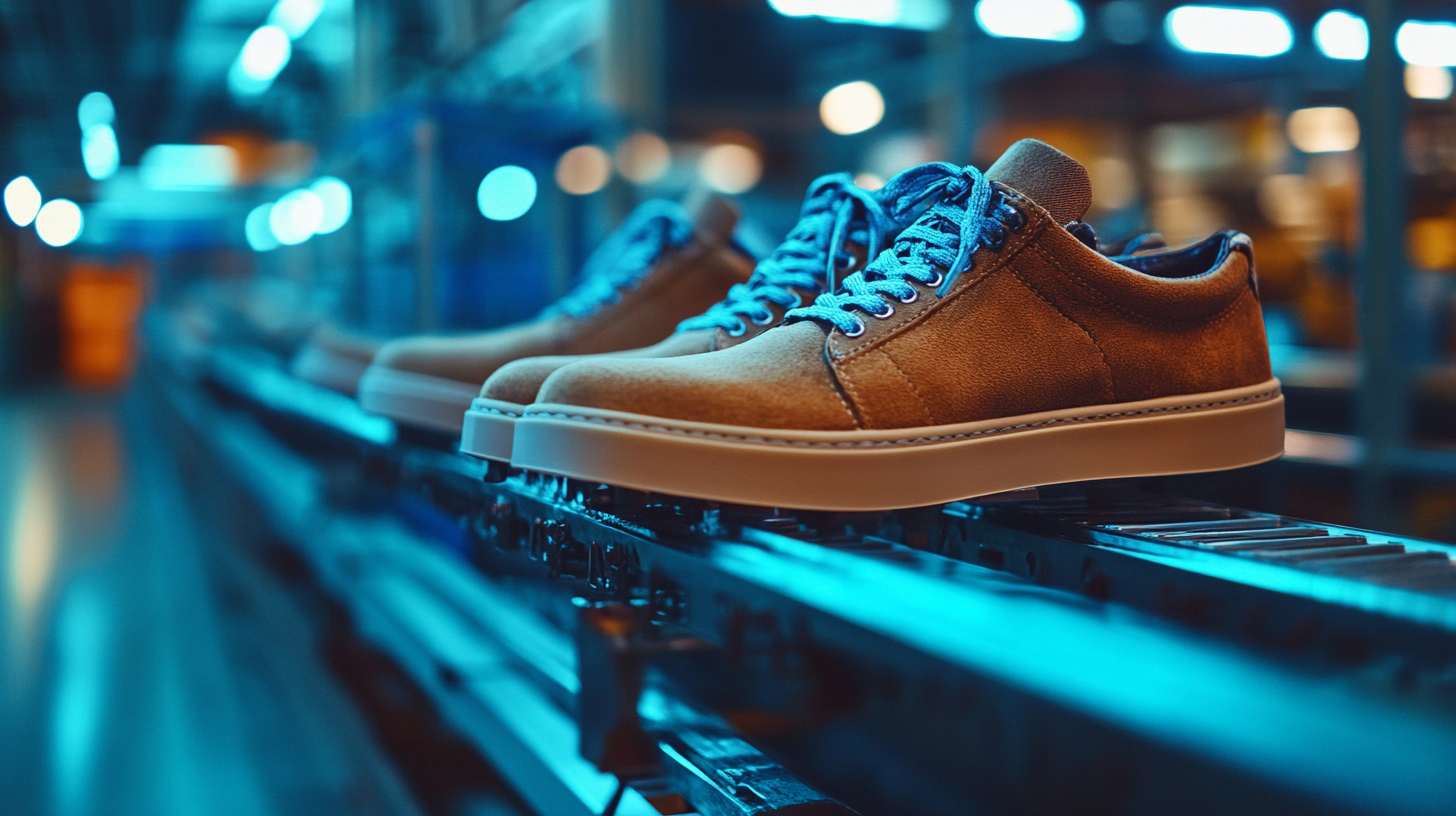
In the face of escalating trade tensions and reciprocal tariffs between the United States and China, the landscape of manufacturing has become increasingly complex for many industries, particularly in the sportswear sector. However, China's custom sports shoes factory has demonstrated remarkable resilience and adaptability, finding innovative solutions to not just survive but thrive amid these challenges. This blog will delve into the strategies employed by these factories, highlighting their ability to navigate tariff obstacles while maintaining high quality and competitive pricing. Additionally, we will explore the parallels between their approaches and those of their counterparts, such as the Korea custom sports shoes factory, which also face similar hurdles in a rapidly evolving global market. By examining these dynamics, we seek to uncover the key factors that contribute to their success in a contentious economic climate.

In today's rapidly evolving retail environment, custom sports shoe factories face significant challenges due to increasing tariffs amid US-China trade tensions. However, resilience is key, and these manufacturers are adopting innovative strategies to adapt to the shifting landscape. By diversifying their supply chains and embracing advanced technology, such as automation and data analytics, they can optimize production processes and reduce costs, enabling them to remain competitive despite tariff pressures.
Moreover, understanding the changing consumer behavior post-COVID-19 is crucial for these factories. As customers seek personalized experiences and sustainable options, factories are pivoting towards customizable products and eco-friendly materials. This not only meets the rising demand for unique footwear but also aligns with the broader trend of sustainability that consumers value. By staying attuned to customer preferences and fostering agility in their operations, custom sports shoe factories can not only navigate tariff challenges but also thrive in the new retail normal.

In the face of escalating US-China trade tensions, Chinese custom sports shoe manufacturers are turning to innovative manufacturing techniques to enhance efficiency and reduce costs. According to a report by McKinsey, companies that adopt advanced manufacturing technologies can boost productivity by 25-30%. This transformation not only mitigates the impact of tariffs but also positions factories to be more competitive globally.
One of the significant advancements is the integration of 3D printing technology, which allows for rapid prototyping and customization. This technique reduces lead times and waste, aligning with the rising demand for personalized footwear. A study from Deloitte indicates that 3D printing can decrease production costs by up to 50% in certain cases, enabling manufacturers to respond quickly to market changes while maintaining quality.
Furthermore, the implementation of smart factory concepts, utilizing IoT and AI-driven analytics, optimizes supply chain management. By adopting these technologies, manufacturers can predict demand more accurately and enhance inventory management, thus reducing overhead expenses. The World Economic Forum estimates that the adoption of smart manufacturing can unlock $3.7 trillion in value by 2025, highlighting the critical need for Chinese sports shoe factories to innovate and thrive amidst tariff challenges.
In the face of escalating US-China trade tensions, China's custom sports shoe factories are finding innovative ways to thrive by shifting their focus from traditional export routes to leveraging local markets. This strategic pivot not only mitigates the impact of tariffs but also taps into the growing demand for locally-produced goods, especially in the burgeoning Asian markets. By understanding consumer preferences and aligning their production capabilities, these factories are enhancing their market presence while reducing reliance on international shipments.
**Tip 1:** Conduct thorough market research to identify local trends and preferences. Understanding the unique tastes and demands of local consumers can provide insights that help tailor your products effectively.
As the factories enhance their operational strategies, collaboration with local retailers becomes crucial. Establishing partnerships with domestic distributors not only increases product availability but also fosters brand loyalty among consumers. By positioning their offerings alongside established local brands, these factories can gain credibility and wider acceptance in the market.
**Tip 2:** Build strong relationships with local partners. Networking and collaboration can open doors to new opportunities, ensuring a smoother entry into local markets and better distribution channels.

In the face of ongoing US-China trade tensions, custom sports shoe manufacturers in China are finding strength through collaborative supply chain management. The latest industry reports indicate that 82% of companies that prioritize collaborative partnerships see a significant reduction in costs, thanks to shared resources and better risk management strategies. By building strong relationships with suppliers, manufacturers are able to streamline production processes and improve their overall response to shifting tariffs.
Furthermore, innovative technologies are playing a crucial role in enhancing collaboration. According to a recent McKinsey report, companies that leverage advanced analytics and real-time data sharing can improve their supply chain efficiency by up to 25%. For custom sports shoe factories, this means being able to forecast demand more accurately and adjust their production schedules accordingly. As they navigate tariff challenges, these manufacturers recognize that a robust supply chain is not just a defensive strategy but a pathway to sustainable growth amidst uncertainty.
In the face of escalating US-China trade tensions, the custom sports shoes factory in China stands out by embracing eco-friendly practices as a competitive advantage. Sustainability is no longer just a trend; it is a necessity. Consumers today are increasingly inclined to support brands that prioritize environmental stewardship. By integrating sustainable materials and processes, the factory not only reduces its carbon footprint but also appeals to a growing demographic of eco-conscious buyers.
**Tip:** To incorporate sustainability into production, consider sourcing organic or recycled materials. This not only minimizes environmental impact but can also resonate with consumers looking for ethical alternatives.
Additionally, adopting energy-efficient technologies and waste reduction strategies can enhance operational efficiency. By streamlining processes and investing in greener technology, factories can significantly lower costs in the long run while strengthening their brand image.
**Tip:** Implementing a recycling program within production can further mitigate waste and encourage a culture of sustainability among employees. This initiative helps in building a positive work environment aligned with modern values.
